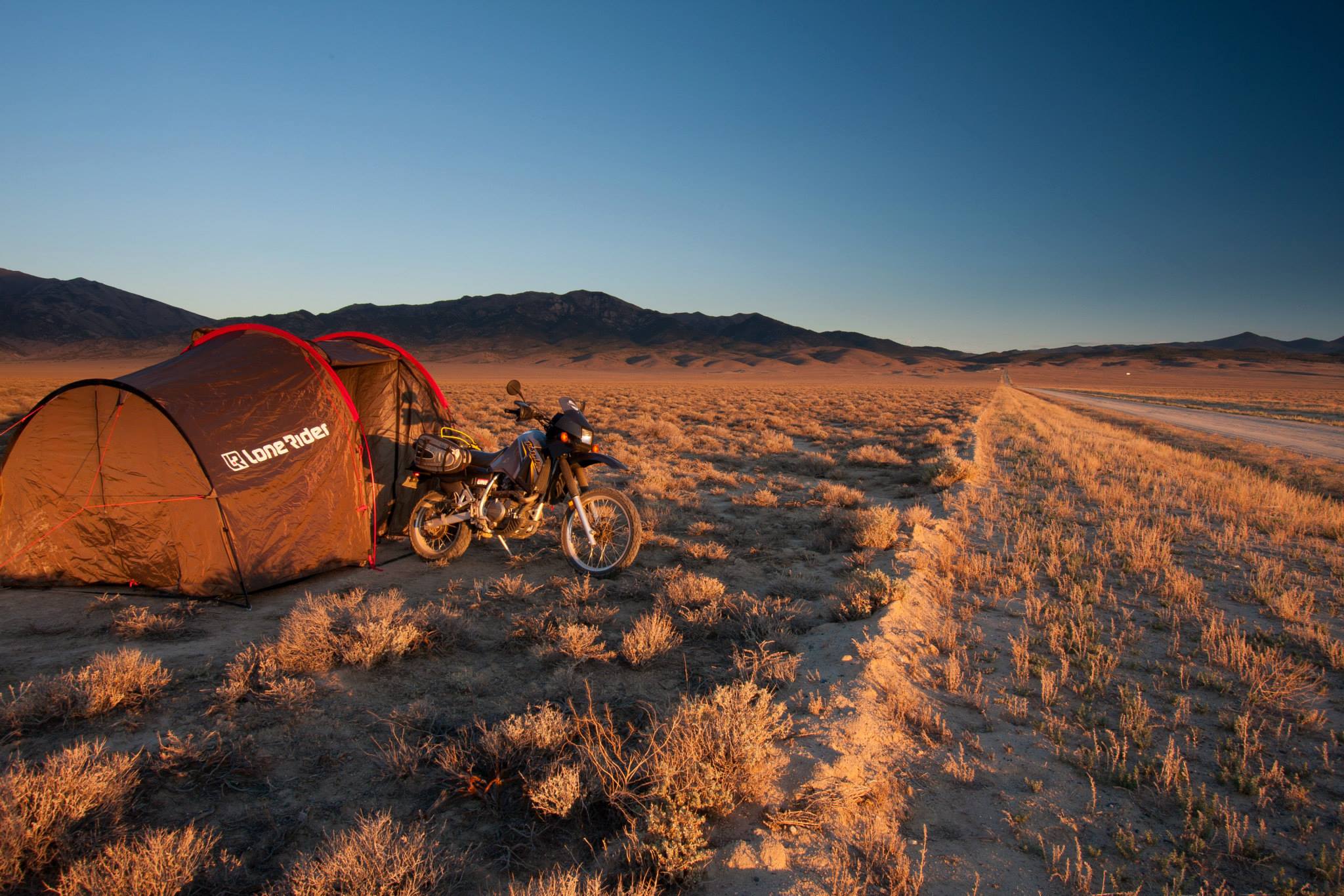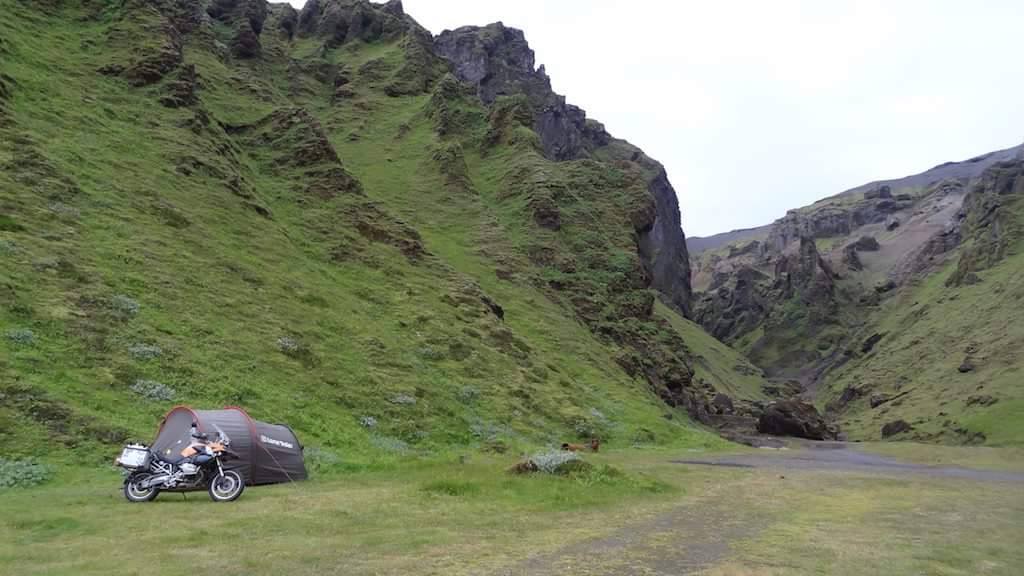Gone (Motorcycle Camping) Without a Trace: 6 Tips

For thousands of years, native people lived so lightly on the land that there were virtually no lasting traces of the lives they led. Their legacy was land that appeared pristine and virtually untouched to those who came later. It was a result of a profound respect for the land.
As less and less land remains pristine and natural, those who go out to enjoy the wild have ever more responsibility to leave the land as they found it; to enjoy it without leaving a trace of their experience.
This is embodied in the leave no trace philosophy. It sounds simple, but even backpacking without the use of any motorized vehicle like a motorcycle presents a challenge in living the leave no trace life on the trail. For motorcycle campers, the challenge—and the responsibility—is even greater.
Leave No Trace Tip #1: Remain On the Trail
A key factor involving the leave no trace philosophy for motorcycle camping is to never go off the designated trails and to not do damage to the terrain with the bike itself. Sod-wrecking wheel spin is out of the question, so it’s a matter of conscientious throttle control.
Unless you are traversing solid rock or hardpan, you’ll leave your tire tracks, of course, but keep them on the trail where they belong and avoid going into terrain that is soft enough to be rutted or ripped up by your machine to the greatest extent possible.

Leave No Trace Tip #2: Bring it Out With You!
All the other activities that go along with motorcycle camping off the main thoroughfares require the same level of awareness. The leave no trace goal goes hand-in-hand with the advice to carry everything out that you carried in; no waste of any kind left behind. Would you leave your Motorcycle Tent behind?
Set an example by picking up any scraps or trash left by others; if everybody did that, the terrain would remain clean as it should be.
Leave No Trace Tip #3: Use Pre-Existing Campsites if Available
To the extent possible, use existing campsites and campfire locations. While it may seem a good way to see more of nature as it really is, departing the existing routes when camping with a motorcycle is both potentially damaging to the very things you came to see and could pose additional dangers. For example, freelancing a trail through thick ferns or underbrush destroys a lot of vegetation and creates the potential for hitting logs or rocks hidden in the vegetation. If you want to get off the beaten path a little, do it on foot and to the extent possible on existing footpaths.
Leave No Trace Tip #4: Umm...Human Waste Talk
Handling your own human waste in such a way as to leave no trace is particularly important. Burying excrement at least six inches deep is a recommended method in areas where soil is available. In some park areas, removing it in a sealable plastic bag (waste alleviating gel) is required where bedrock is the prevailing ground surface and burying is not an option.
Leave No Trace Tip #5: Look But Don’t Touch
When you get into the backcountry, you may well see things of remarkable beauty that you just won’t find in town or along the well-traveled roads. Unique plants, flowers, types of rocks and so on may be found in your travels. Always leave them where you found them, if you discover bird nests, animal dens, burrows or other parts of wildlife habitat, practice the “look but don’t touch” creed.
If you find a burrow, nest or den with young in it, absolutely never touch the young or disturb the nest. Keep your distance, even if taking a photograph. Some animals may abandon their nest or burrow when human scent is present. In addition, even getting too close to some animal burrow or den sites can be more than a little dangerous—wolverines, bears, badgers and others have been known to be down-right nasty to nosey tourists.

Leave No Trace Tip #6: Noise Pollution & Fire Thoughts
Another special challenge for the motorcycle camper is the potential to bring excessive noise to every part of the trail from your bike and, when fire dangers are high due to very dry conditions, unintended fire danger may also be present if your bike’s exhaust system doesn’t have a spark arrestor.
Law in many jurisdictions worldwide requires their use. Please check the corresponding laws in the country you are traveling.
Be particularly aware of both potential noise and fire-starting problems if your bike has an aftermarket exhaust system—it may have been designed to boost performance, but may not be very quiet or include a spark arrestor. Excessive noise not only ruins the peace and quiet you may be seeking, it does that for everybody else on the trail, as well.
It also may also have adverse effects on wildlife you had hoped to see, driving them deeper into the woods, disrupting the hunt of predators and the feeding patterns of a variety of species. Needless to say, inadvertently starting a wildfire with an improperly equipped bike can have very grim, long-lasting consequences.
You’ll know you’ve really got it down pat if you can look back on the terrain you just left and can’t see a sign you were ever there. There is one thing you can feel free to leave behind—a good impression among other motorcycle campers.
Start prepping for your next Motorcycle Adventure with www.lonerider-motorcycle.com

